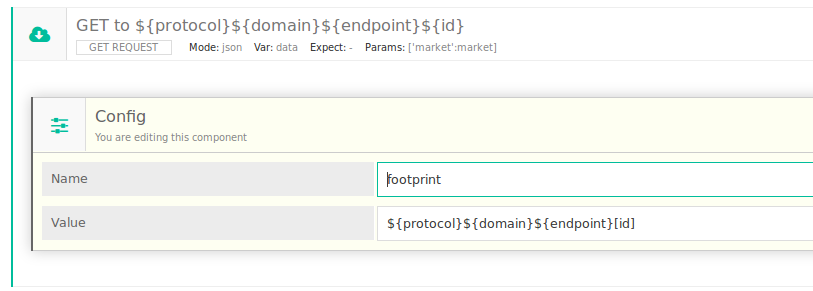Improving Your Metrics
Legacy Documentation
You're viewing legacy documentation for API Fortress (deployed via an on-premises container). To view documentation for the new SaaS version of API Fortress — now known as Sauce Labs API Testing and Monitoring (with Sauce Connect tunnels) — see API Testing on the Sauce Labs Cloud.
The performance of the API can be mission critical in some cases, and cataloging metrics can be as important as collecting them.
The classic approach of creating big tables of HTTP hits with the actual URL being called and its performance is certainly accurate but far from being easy to review because URLs contain IDs and hardly represent what the action was about.
API Fortress, as a default, works in this "classic" (dull?) way, but gives you to possibility to change the "footprint" of requests, based on your organization needs.
To activate this feature you need to add a "config" component to your I/O operation to reconfigure the footprint.

In this example, most of the request remains the same, but the ID value is actually replaced with the static string "[id]", therefore making the calls with this pattern equivalent when browsed in the project dashboard.

And this is just one of the approaches. You're virtually free to write the footprints that best fit your needs.